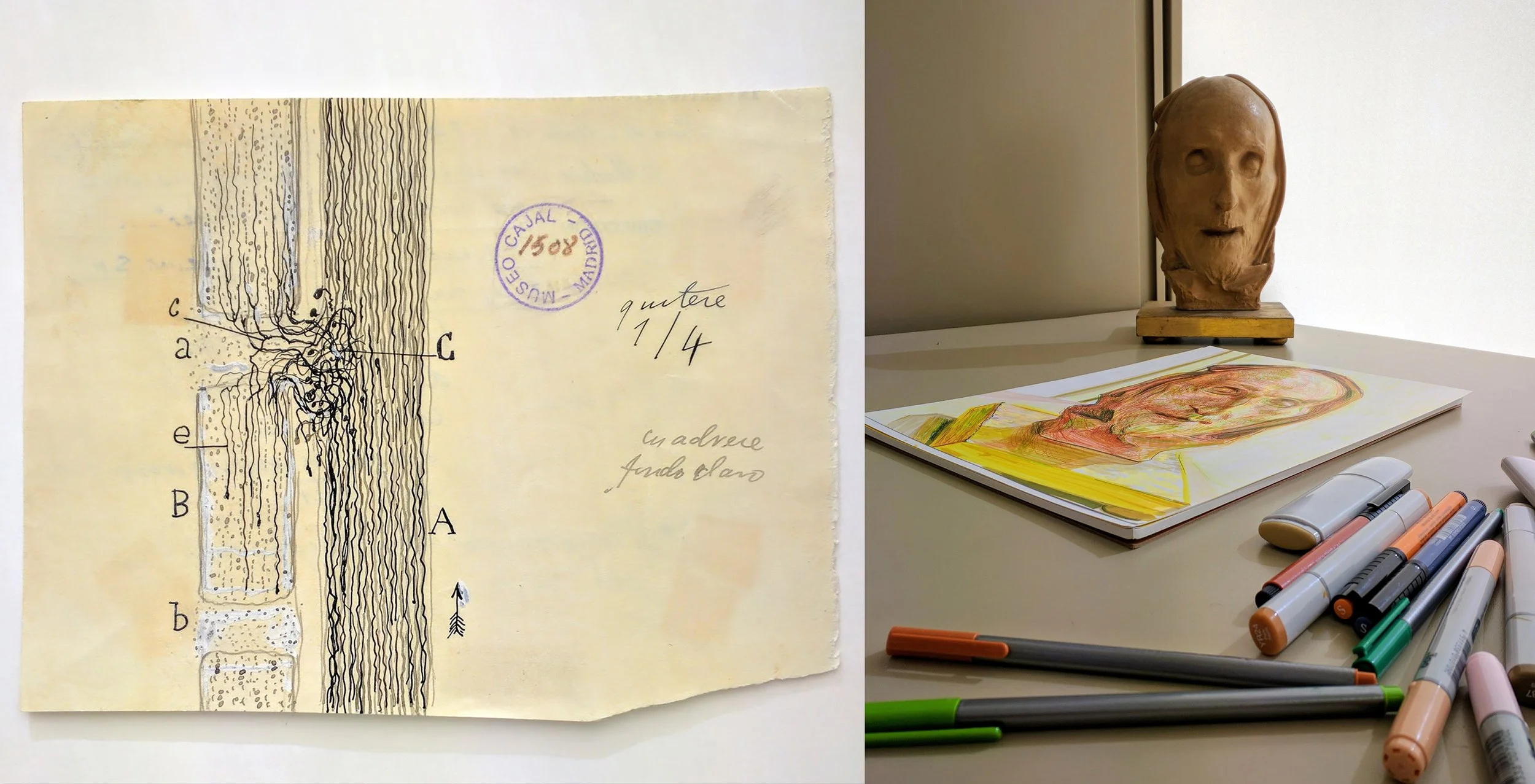Image of Dawn Hunter holding the Nobel Prize document awarded to Spanish histologist Santiago Ramón y Cajal.
Primary Sources
An example image of Cajal’s regenerative neuron illustrations (left), and Cajal’s death mask mold along with art created by Dawn Hunter during a Fulbright Spain Senior Research Fellowship to the Instituto Cajal in Madrid, Spain (right). Cajal's scientific drawing and death mask are reproduced here courtesy of the Instituto Cajal, Madrid.
The Science
Santiago Ramón y Cajal (1852-1934) was a Spanish histologist. He is famous for his innovative methods of studying the brain and nervous system. Improving the Black Reaction stain or Golgi method, he was able to see the neurons (nerve cells) as individual, discrete units for the first time. In 1906, Cajal was jointly awarded a Nobel prize with Camillo Golgi for their work on the nervous system. Cajal is the muse of my artwork. In order to create work that resonates authenticity, I research his scientific drawings, personal photography, journals, and personal possessions, now at the Instituto Cajal.
"Dueling Cajals" is a surreal drawing. Viewers are taken on a journey through profiles of Cajal, which are cast shadows of his death mask on paper. They are juxtaposed with Cajal's regenerative neuron imagery. The snake and vegetation in the drawing are a direct reference to the illustrations found on his Nobel Prize in Medicine. Don Quixote was a psychologically formative book for Santiago Ramón y Cajal. The dueling knights served as personified opposing philosophies in science, and internal struggle that Cajal felt as a youth. He wanted to be an artist and his father wanted him to go into medicine. In his scientific research he was able to reconcile, but never fully resolve, those opposite sides of himself.
Dueling Cajals has been published in Scientific American® as one of the winners of the Art of Neuroscience competition.
The Artist
Dawn Hunter received her BFA from the Kansas City Art Institute and her MFA from the University of California, Davis, where she studied with Robert Arneson, Roy DeForest, and Irit Rogoff. Dawn has participated in numerous exhibitions throughout the United States and Europe. She has received many awards and grants for her artwork, markedly a Starr Foundation Fellowship to the Royal Academy of Art, London and a Fulbright Fellowship to the Instituto Cajal, Spain. She is currently an Associate Professor of Art at the University of South Carolina, Columbia, SC.
Copyright statement. This work is published under the CC BY-NC-SA license


